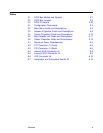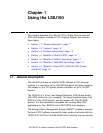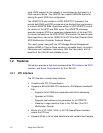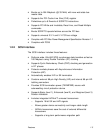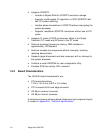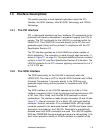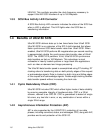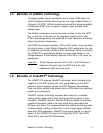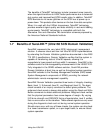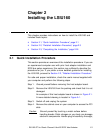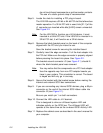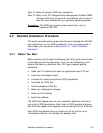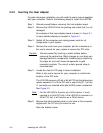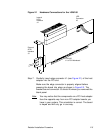
3.75 pc 10.25 pc 11.25 pc 38.25 pc
4.333 pc
48.583 p
c
52.5 pc
34.5 pc
44.25 pc
1-6 Using the LSIU160
LSIU160. This oscillator provides the clock frequency necessary to
support Ultra160 SCSI transfers of up to 160 Mbytes/s.
1.3.3 SCSI Bus Activity LED Connector
A SCSI Bus Activity LED connector indicates the status of the SCSI bus
when a LED is attached. This LED lights when the SCSI bus is
transferring information.
1.4 Benefits of Ultra160 SCSI
Ultra160 SCSI delivers data up to two times faster than Ultra2 SCSI.
Ultra160 SCSI is an extension of the SPI-3 draft standard that allows
faster synchronous SCSI data transfer rates than Ultra2 SCSI. When
enabled, Ultra160 SCSI performs 80 megatransfers per second resulting
in approximately double the synchronous data transfer rates of Ultra2
SCSI. The LSI53C1010 performs 16-bit, Ultra160 SCSI synchronous
data transfers as fast as 160 Mbytes/s. This advantage is most
noticeable in heavily loaded systems or large block size applications
such as video on-demand and image processing.
The Ultra160 data transfer speed is accomplished using DT clocking. DT
clocking refers to transferring data on both polarity edges of the request
or acknowledge signals. Data is clocked on both rising and falling edges
of the request and acknowledge signals. Double-edge clocking doubles
data transfer speeds without increasing the clock rate.
1.4.1 Cyclic Redundancy Check (CRC)
Ultra160 SCSI includes CRC which offers higher levels of data reliability
by ensuring complete integrity of transferred data. CRC is a 32-bit
scheme, referred to as CRC-32. CRC is guaranteed to detect all single
bit errors, any two bits in error, or any combination of errors within a
single 32-bit range.
1.4.2 Asynchronous Information Protection (AIP)
AIP is also supported by the LSI53C1010, protecting all non-data
phases, including command, status, and messages. CRC, along with AIP,
provides end-to-end protection of the SCSI I/O.




